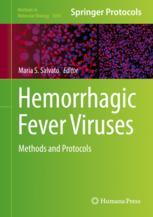

Most ebook files are in PDF format, so you can easily read them using various software such as Foxit Reader or directly on the Google Chrome browser.
Some ebook files are released by publishers in other formats such as .awz, .mobi, .epub, .fb2, etc. You may need to install specific software to read these formats on mobile/PC, such as Calibre.
Please read the tutorial at this link: https://ebookbell.com/faq
We offer FREE conversion to the popular formats you request; however, this may take some time. Therefore, right after payment, please email us, and we will try to provide the service as quickly as possible.
For some exceptional file formats or broken links (if any), please refrain from opening any disputes. Instead, email us first, and we will try to assist within a maximum of 6 hours.
EbookBell Team

0.0
0 reviewsThis volume presents protocols that analyze and explore hemorrhagic fever viruses (HFV). This book is divided into 5 parts: Part I begins with an overview on predicting viral pandemics and then covers methods for surveillance, diagnosis, and classification of HFV. This includes an antibody capture method using Lassa virus antigens. Part II discusses structural studies and reverse genetics of HFV. The chapters in this part describe envelope glycoprotein membrane fusion studies, arenavirus nucleocapsid protein, and the use of virus-like-particles to study viral egress. Part III explores in vivo models of HFV infections, and contains chapters on murine, guinea pig, and primate models for HFV, and methods to obtain a subset of primary human liver cells that can be cultured long-term. Part IV looks into immune assays and vaccine production for HFV. The chapters in this section cover the attenuated vaccine for Argentine HFV, detecting virus-antibody immune complexes in secondary dengue infections, and DNA vaccination. Part V discusses host responses to viral hemorrhagic fever, and contains chapters on identifying host restrictions to Junín or Dengue infection, and a cell-culture method to assess coagulation after HFV infection. Written in the highly successful Methods in Molecular Biology series format, chapters include introductions to their respective topics, lists of the necessary materials and reagents, step-by-step, readily reproducible laboratory protocols, and tips on troubleshooting and avoiding known pitfalls.
Thorough and cutting-edge, Hemorrhagic Fever Viruses: Methods and Protocols is a valuable resource for scientists and researchers who want to bridge the gap between virus recognition in surveillance and understanding host responses to infection.